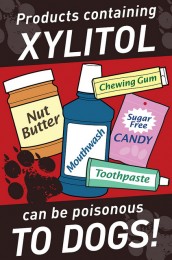While you gather with family and friends for the holidays, don’t forget your pets. Here are some tips from FDA Consumer Update, Keep Your Dogs and Cats Safe from Holiday Hazards, to give a stocking full of safe treats to your favorite pet.
- Spread out the pet treats so they don’t gobble them up all at once.
- Keep an eye on pets playing with tinsel, ribbons and bows. If eaten, they can cause serious stomach and intestinal damage.
- If making homemade play dough or salt-dough ornaments, these are not treats for your pets. High amounts of salt can be deadly.
- Holiday plants like poinsettias, mistletoe, or holly are not tasty treats for pets. Keep them away from their reach.
- Table scraps can upset your pets stomach. Avoid giving them fat trimmings, turkey, chicken or meat bones, or skin from roasted turkey or chicken. These can cause illness and bones can get stuck in your pets esopagus, stomach, or trachea. Keep trash cans hidden so they don’t try to grab a snack.
- Some human foods are not pet friendly. For example, some holiday treats contain xylitol. If your pet consumes this ingredient, it can cause lowering of blood sugar, decreased activity, weakness and even seizures. Chocolate can cause liver failure, bleeding disorders, and death. Keep pets away from alcohol.
- Snack bags may look like toys to pets. But if they get their noses inside the bags, they can get stuck and could lead to suffocation.

